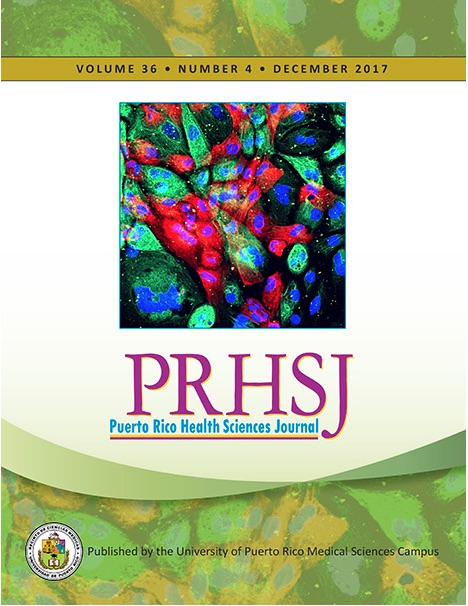 Ferdinand Rodríguez-Agramonte, MD; Juan Carlos Jiménez, MD; José Raúl Montes, MD, FACS, FACCS
Ferdinand Rodríguez-Agramonte, MD; Juan Carlos Jiménez, MD; José Raúl Montes, MD, FACS, FACCS
Objective: To describe the prevalent side effects of prostaglandin analogues (PA) in a Hispanic population and their effect on quality of life (QOL).
Patients and Methods: This is a cross-sectional study conducted in a tertiary medical facility in which patients were evaluated in a single visit. Total of 14 participants in the study, 10 women and 4 men. Ages ranged from 26-78 years old. Subjects underwent a single full Oculoplastic evaluation by two physicians; one was blinded on patient medical history and assessed for PA side effects. After evaluation, each study subject was asked to answer a self-reported QOL questionnaire.
Results: Study participants had used or were currently using Bimatoprost (28.6%), Latanoprost (50%) or Travoprost (21.4%). After evaluate periorbital changes, 2 patients (14.3%) had ptosis, 2 (14.3%) had periorbital skin hyperpigmentation, 11 (78.6%) had periorbital fat show, 11 (78.6%) had eyelash elongation, 1 (7.1%) had injected conjunctiva, 5 (35.7%) had iris hyperpigmentation. 10 (71.4%) noted changes in the size/shape of their eyes. The questionnaire show that 10 (71.4%) disliked how their eyes looked. 9 (62.4%) reported dry eyes, 3 (21.4%) noted increased need to blink, 5 (35.7%) reported foreign body sensation, 7 (50%) reported burning sensation, 2 (14.2%) reported secretions and 3 (21.4%) reported sticky eyes. Mean QOL was 3.50, 2.14, and 2.00 in the Bimatroprost, Latanoprost, and Travoprost users respectively.
Conclusion: QOL questionnaire showed that Bimatoprost side effects had the most negative impact in QOL, followed by the Latanoprost and Travoprost groups. [P R Health Sci J 2017;36:218-222]
Key words: Prostaglandin analogues, Quality of Life, Periorbital
